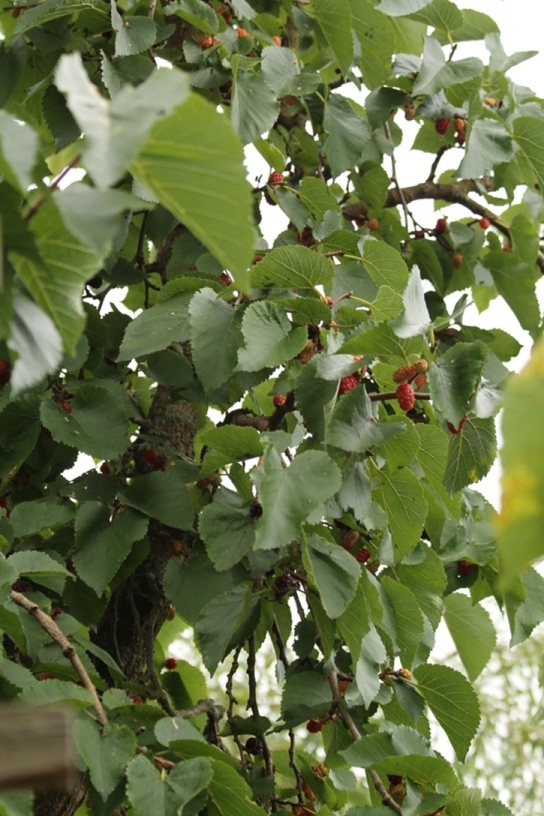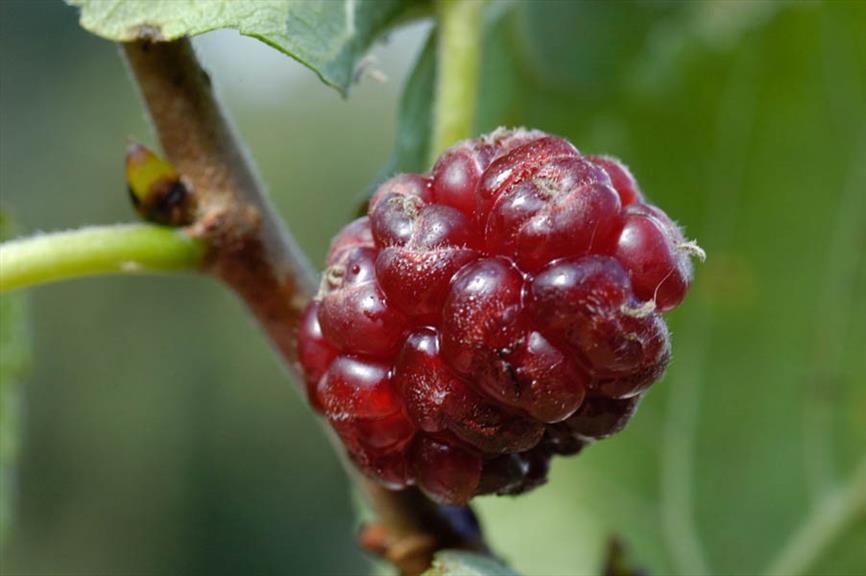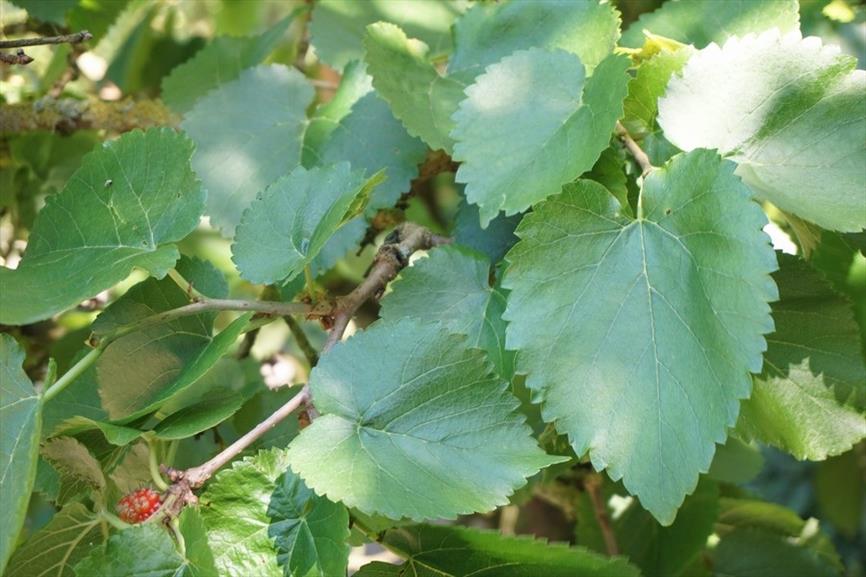Black Mulberry
Morus nigra
Mulberry family (Moraceae)
Both tasty and healthy
The black mulberry (Morus nigra) is native to Central and west Asia and is widely cultivated across southern Europe. The fruits are a cluster of spherical drupes that together resemble a raspberry. Initially they are green in colour but later turn to orange-red and finally to a very dark red. They are edible, have a sweet taste and are considered to be the best tasting species of mulberry.
The black mulberry has been used for thousands of years in traditional Chinese medicine. Multiple parts of the tree can be used. The leaves can work as an antibacterial, astringent, analgesic and eye curative. Mulberry leaf tea is taken for colds, flu, eye infections and nosebleeds. The stems work as a diuretic and can help to lower the blood pressure.
Themes
Crown jewel in the Historic Garden of Aalsmeer and Overzee Botanic Garden.
The mulberry has a long history of medicinal use in Chinese medicine, almost all parts of the plant are used in one way or another. A homeopathic remedy is made from the leaves used in the treatment of diabetes. The sole use of the mulberry in modern medicine is in the preparation of a syrup, employed to flavour or colour other medicines.
The fruit is white, red or black and edible. The fruit is juicy and refreshing, though it must be used as soon as it is ripe or otherwise used in preserves like jam or made into wine.
A fibre used in weaving is obtained from the bark. The wood is used in joinery.
A red-violet to dark purple dye is obtained from the fruit; a yellow-green dye is obtained from the leaves.
The mulberry can reach a great age - 500 years.
The black mulberry was planted in England as early as the beginning of the sixteenth century in the hope that it could be used to feed silkworms thus producing silk. Although many specimens were imported by order of King James I (1566 - 1625), it turned out that silkworms preferred the leaves of the white mulberry (Morus alba). However, the white mulberry did not thrive in the British climate.
Details
| Description: | Tree, 6-12 m. |
|---|---|
| Distributions: | Southwestern asia |
| Habitat: | It has been cultivated for so long that its native range is unknown. |
| Year cycle: | Perennial (polycarpic decidous) |
| Hardiness: | Colder than -4 f (very hardy) |
| Flowering period: | Mei - juli |
| Flower color: | Green |
| Notes on flowers: | Green catkin-like inflorescence. |
| Fruiting period: | Augustus - september |
| Fruit color: | Purple, red |
| Notes on fruits: | Fruits 2 cm in length, dark purplish-red. |
| At its best: | Augustus - september |



